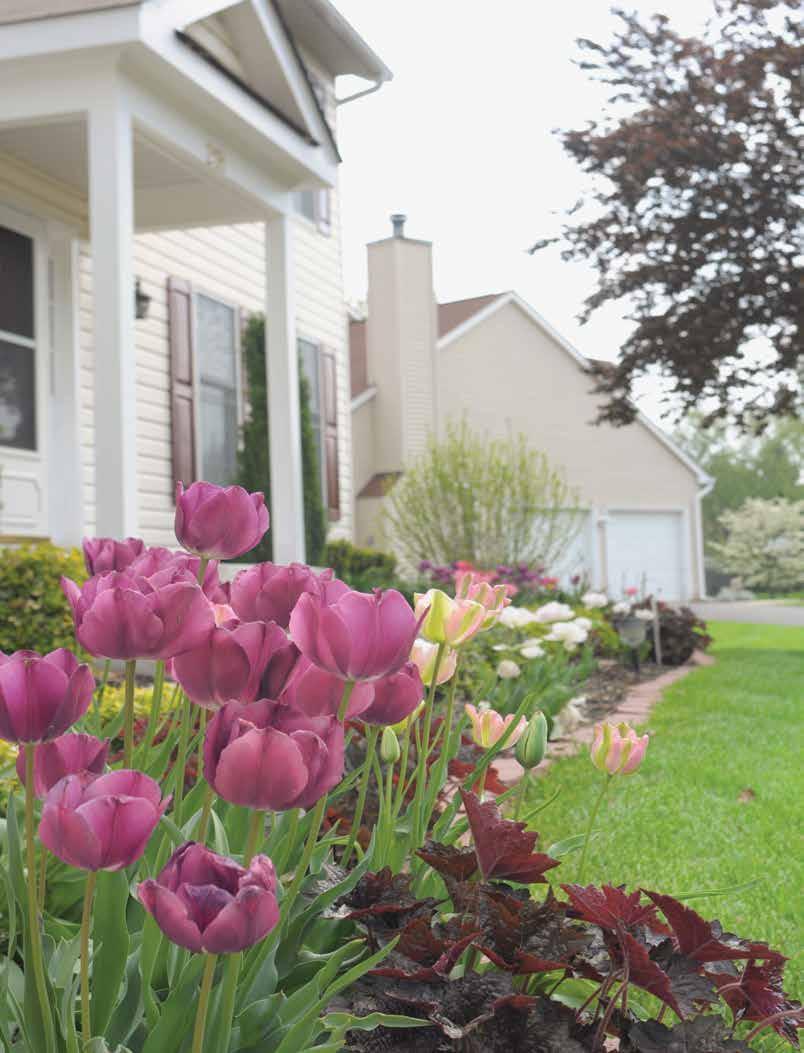
























































































METRO - Homeowners want to view their homes as a respite from all that goes on outside their doors. Indeed, turning a home into a residents-only retreat can ensure everyone looks forward to walking through the front the door at the end of the day.
One of the more popular ways to turn a home into one’s own personal retreat is to upgrade the bathroom. A renovated bathroom can completely transform how individuals feel about their homes. The following are some features to consider when remodeling a bathroom with relaxation in mind.
• Open shower: An open shower is a visually stunning addition to any bathroom. Such showers give a bathroom a more open look, thanks in part to the fact that these modern features do not feature a door or require the use of a shower curtain. The result is a clean look that many people associate with a luxury hotel. When speaking with a contractor about an open shower install, homeowners can ask about a half-wall to safeguard against water splashing out of the shower. In addition, a heat lamp can help ensure residents stay warm until they’re ready to leave the bathroom.
• Heated features: Additional features to keep
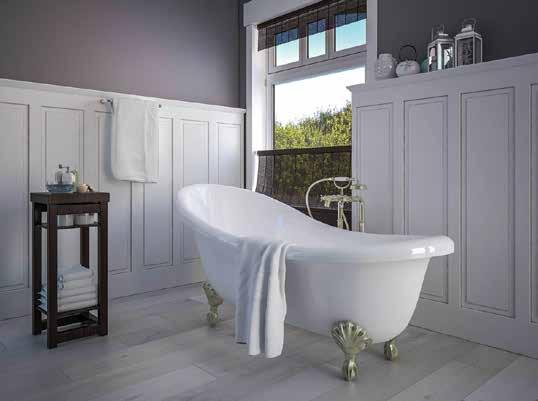
everyone calm and warm can be considered when upgrading the bathroom. Radiant flooring can ensure everyone’s toes remain toasty, and the installation of such a feature can eliminate the need for floor mats and bath mats that some homeowners may not like. Commit further to the heat theme with a heated towel rack, which is another feature associated with luxury hotels that can be just as enjoyable at home.
• Soaking tub: An open
shower creates an instant feeling of luxury, but few things are more suggestive of relaxation than a soaking tub. A long day at school or the office or a day when winter winds are howling outside is made much better with a good a soak. The National Kitchen & Bath Association notes that luxury bathrooms featuring soaking tubs are wildly popular, and that vaunted status is undoubtedly due to the relaxing benefits of a good soak.
• Skylight: Even if the
goal of a luxury bathroom is to leave the outside world outside, allowing some natural light inside is a great way to add a little extra calm to the room. Floor-to-ceiling windows may seem appealing in brochures or advertisements, but such features do not create the sense of privacy many people prefer in their bathrooms. One or two skylights can create that sense of privacy and still allow for natural light to enter the room, making this an option that provides the best of both worlds.

Wood floors bring warmth to a home and are very popular. Cleaning them correctly can add to their appeal and longevity.
METRO - Wood floors are coveted for a number of reasons, not the least of which is their aesthetic appeal. Many people prefer wood flooring because dust and dirt do not become trapped as they would in carpet fibers, seemingly making wood flooring easy to clean.
Most floors endure a lot of wear and tear. However, with care, wood flooring may last for decades. Part of that care includes understanding how to properly clean and maintain wood floors so they look their best. The following are some steps for keeping wood floors as pristine as possible.
• Remove shoes. It’s a good idea to remove shoes, particularly heels, when walking on wood floors. Sharp heels, cleats and other shoes can scratch or dent wood flooring. All shoes can track in excess dirt, which can contribute to a lack of luster as well.
• Sweep or vacuum frequently. The experts at The Spruce suggest sweeping, vacuuming or dust mopping wood floors
daily. Dirt and dust make floors more slippery, and dirt or sand particles can lead to scratches on the floor.
• Learn your flooring type. Wood flooring is broken down into three main categories: solid hardwood flooring, engineered hardwood flooring and laminate wood flooring. Traditional hardwood is made of planks or strips of any hardwood covered in a wood stain. Engineered flooring is manufactured by gluing together several thin plies of hardwood. Laminate flooring looks like wood but generally is a veneer or a photographic image of wood covered by a thick layer of melamine resin over fiberboard.
• Skip harsh cleansers. Regardless of flooring type, most are covered by a sealant that can become streaky or dull if the wrong cleanser is used. Avoid chlorine bleach, ammonia, pine oil, or undiluted vinegar. Instead, choose a cleanser that is specifically recommended for the flooring type. Do not allow water or solutions to sit
on the floor, as that can contribute to staining and warping. With laminate flooring, avoid wet mopping unless the flooring is specifically marked as being able to be wet. The underlayers of laminate flooring can warp if it gets wet.
• Damp is better than wet. When cleaning wood flooring, use a damp rather than a soaking wet mop. Better Homes & Gardens says standing water can damage wood surfaces.
• Use the hard floor setting. When vacuuming, adjust the vacuum to a hard flooring setting, which will not engage the brush rollers on the vacuum head. Rollers can scratch wood and laminate flooring, advises The Home Depot.
• Use repair products as needed. Scratch and repair kits can fill in small scratches. Wood floor polish and wood waxes also can revitalize worn floors. Again, check that the product is safe for your particular flooring before use.
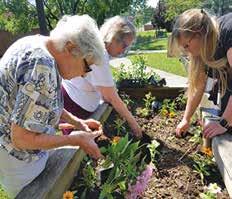
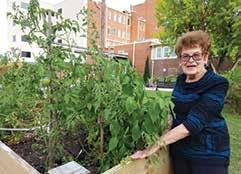


METRO - The adage “there’s a lid for every pot” suggests that, even in relation to the real estate market, there’s bound to be a buyer for every home on the market. Price is a significant variable in the minds of potential buyers, but there are additional factors that can affect the impression people get of a given home.
Certain home features can tip the scales in favor of sellers. In fact, various renovations can help sell homes more readily. And these renovations need not cost a fortune. Putting a home on the market can be stressful, but these renovations may help it sell fast.
• A fresh coat of paint: Although painting is relatively inexpensive and a job that some do-it-yourselfers can tackle, it’s not a task relished by many. Painting is messy, it takes time, and requires moving furniture. In fact, prepping a room for painting often is the toughest component of any painting job. But fresh coats of paint can create a strong
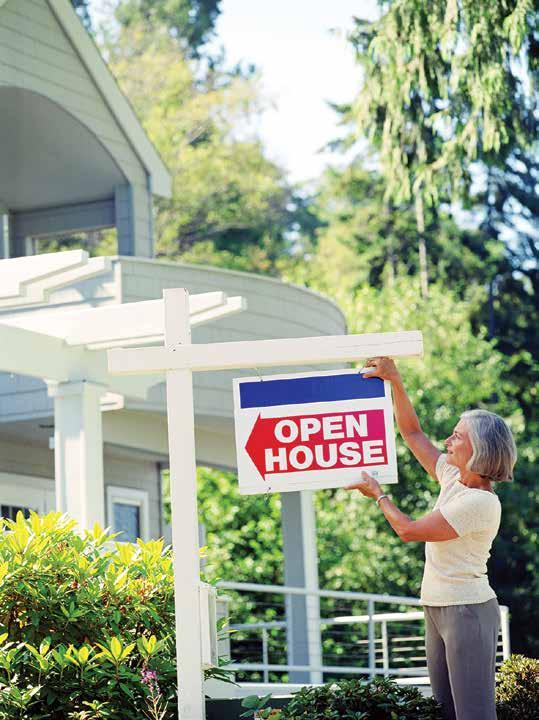
first impression. Choose a neutral color and get painting. Jennie Norris, chairwoman for the International Association of Home Staging Professionals, says gray is a “safe” color that has been trending in recent years.
• Minor bathroom
remodel: Remove dated wall coverings, replace fixtures, consider re-glazing or replacing an old tub, and swap old shower doors for fast fixes in a bathroom. If there’s more room in the budget, replacing a tub, tile surround, floor, toilet, sink,
vanity, and fixtures can cost roughly $10,500, says HGTV. You’ll recoup an average of $10,700 at resale, making a minor bathroom remodel a potentially worthy investment.
• Redone kitchen: The kitchen tends to be the hub
of a home. This room gets the most usage and attention of any space, and it’s a great place to focus your remodeling attention. The National Association of the Remodeling Industry estimates that homeowners can recover up to 52 percent of the cost of a kitchen upgrade upon selling a home. Buyers want a functional and updated kitchen. Trending features include drawer-style microwaves and dishwashers, commercial ranges, hidden outlets, and even wine refrigerators.
• Updated heating and cooling system: Better Homes and Gardens reports that homeowners may be able to recoup 85 percent of the cost of new HVAC systems when they sell their homes. Heating, cooling and ventilation components are vital to maintain. You don’t want buyers to be taken aback by an older system, and many millennial buyers are not willing to overlook old mechanical systems.
• Fresh landscaping: A home’s exterior is the first thing buyers will see. If they pull up to a home with eyecatching landscaping and outdoor areas that are attractive yet functional, they’re more likely to be intrigued. Often buyers will equate a home that features an impressive exterior with upkeep inside as well. The American Nursery Landscape Association says the average homeowner may spend $3,500 for landscaping.
10 things never to plug into a power strip
Refrigerators and freezers, microwaves, coffee makers, toasters, slow cookers, hot plates, hair-care appliances, portable heaters and air conditioners, sump pumps, air compressors and another power strrip.

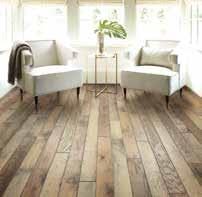







As people spend more time enjoying their properties, they can consider the
comfortable.
- Private backyards are now go-to spaces for recreation and entertainment and great places to recharge the body and mind.
One ripple effect of the COVID-19 pandemic was more time spent outdoors, even if it was predominantly on one’s own property. OnePoll, in conjunction with the lawn care company TruGreen, surveyed 2,000 American homeowners and found participants spent 14 hours outside every week in 2021, which was three hours more than prior to the pandemic. In addition, respondents admitted that time spent outdoors was therapeutic.
A separate survey conducted for the
International Casual Furnishings Association found that people now spend more time relaxing, gardening, exercising, dining, and entertaining outside than in years past. Though COVID-19 may no longer dominate headlines, the desire to enjoy outdoor spaces has not waned.
While enjoying outdoor living areas, homeowners can do all they can to make these spaces comfortable and welcoming. The following are some good starting points.
Outdoor spaces can be enjoyed no matter the hour when there is ample lighting. That could be why the International Ca-
sual Furnishings Association reports those who plan to renovate their outdoor spaces list outdoor lighting as a priority. Outdoor lighting not only sheds light on entertaining spaces, but also makes spaces safer and more secure.
No matter how friendly homeowners are with their neighbors, there comes a time when privacy is paramount. Fencing, whether it is wood or vinyl, or even a natural fence made from closely planted hedges, can ensure residents feel comfortable venturing outdoors to swim, take a cat nap or even star gaze in private.
Homeowners should note the direction their backyard faces and the typical daily conditions of the space. For example, a yard that faces southwest may get plenty of strong sun during the day, requiring the addition of shade trees, covered patios or arbors to cut down on the glare and heat. If the yard is often hit by winds, trees or bushes planted strategically as windbreaks can help.
High-quality comfortable seating increases the liklihood that homeowners will want to stay awhile in their outdoor spaces. A deep seating set complete with plush chairs, outdoor sofa or love seat and chaise lounge chairs gives people more opportunity to sit and stay awhile.
A pool can be the perfect gathering spot on a warm day, while a spa/hot tub can bridge the gap to cooler weather. According to the Family Handyman, soaking in hot tubs can relax tired muscles after a long day, loosen up stiff joints, improve cardiovascular health, and reduce the time it takes to fall asleep.
Homeowners may want to consider using a professional exterminator to get rid of ticks, mosquitoes and other nuisance insects from outdoor spaces.


quality is not something people think about all that much, especially in developed nations. Though it can be easy to take water quality for granted in countries with ample regulation and sophisticated filtering systems, there are times when anyone, regardless of where they live, should take stock of the water in their homes.
One of the variables for individuals to consider is how long it’s been since they last tested the water quality in their homes. For those who have never done so, those who have done it but can’t recall precisely when or those who know it’s been more than a year since the last test, then it’s a good time to test the water. In fact, the U.S. Environmental Protection Agency recommends annual testing for coliform bacteria, nitrates, total dissolved solids, and pH levels. The EPA notes this testing is especially important for anyone who is using a new well or has replaced or repaired pipes, pumps or the well casing.
Testing may not be necessary for individuals who get their water from public water supplies. The EPA notes that anyone who pays a water bill gets their water from a public supply system, which is responsible for monitoring and testing water and reporting the results of those tests to the
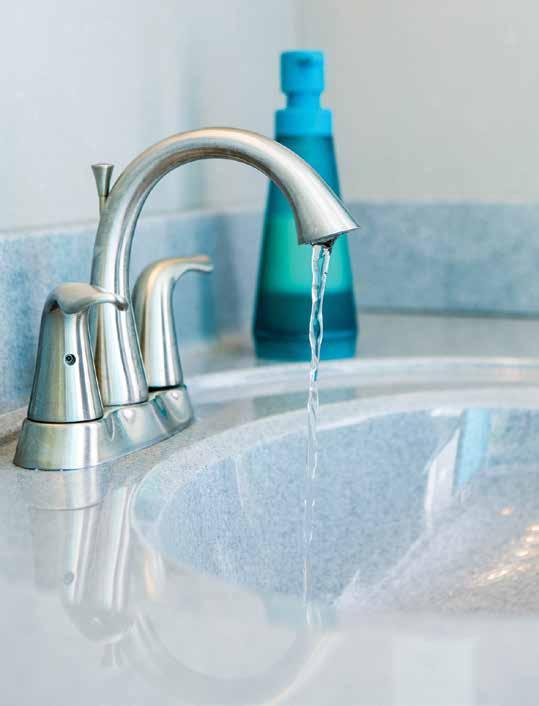
Water quality is easily taken for granted. However, various scenarios may necessitate testing the water supply. A local health department office can be a useful resource for individuals who want to confirm that their water supply is safe.
appropriate agencies as well as the individuals who use the water. Homeowners and tenants who pay a water bill should receive an annual water quality report from their water supply utility, while renters can request a copy of that report from their landlords if they do not pay the bill themselves.
What about private water supply systems?
Individuals who receive their water from a private system, such as a household well, are responsible for conducting their own water supply testing. These tests should be conducted annually and in the aftermath of a spill or other incident that could taint the water supply.
Are there any special circumstances
T he EPA notes that certain situations may call for testing the water supply, even if it’s provided by a public supply system. For example, the EPA recommends that expecting parents test their water supply for nitrates in the early months of a pregnancy. Testing should then be conducted again prior to bringing an infant home and once more during the first six months of the baby’s life. The EPA notes nitrate tests are best conducted in spring or summer after periods of rain.

An eye, taste and/or smell test also can indicate if the water supply should be tested. Water that stains, has an unusual taste and/or a conspicuous odor should be tested. In these instances, test for sulfate, chloride, iron, manganese, hardness, and corrosion.
A local chemical or fuel spill also should trigger a test of the water supply. The EPA notes that these tests can be expensive and recommends individuals contact a local expert to determine which contaminants to test for.



METRO - Spring is a season of rejuvenation that compels millions across the globe to quit hibernating and get back to enjoying the great outdoors. Spring also marks a great time to assess a home’s exterior, namely those areas like a deck where people will spend a lot of time in the warmer months to come.
Assessing a deck after winter can be eye-opening. Harsh winter weather can take its toll on a deck, and the following are some telltale signs that a deck could be in need of repair or replacement.
• Wobbly underfoot and in hand: Wobbly planks and railings are one sign of a deteriorating deck homeowners won’t recognize as they hide from winter weather indoors. But these tend to reveal themselves rather quickly when examining a deck after winter. Wobbly planks in the middle of the deck can be inconvenient, but wobbly steps and railings can be dan -
gerous. According to the home improvement resource Angi, wobbly railings can be a byproduct of rot. A local decking professional can assess the extent of the rot in railings and elsewhere and determine the best course of action. If the rot is isolated to an area or two, a simple repair may be all that’s necessary. Extensive rot may require a full replacement of the existing deck.
• Faded paint: Many homeowners paint their wood decks, and that paint will not last forever. Faded paint can turn an otherwise lovely deck into an eyesore, and paint can fade over the winter. Thankfully, a local painter can address a faded deck and may recommend some additional strategies to safeguard the deck against fading next winter and beyond.
• Holes in the wood: Many a homeowner has encountered curious-looking holes in their deck. This could be a sign of in -








sect infestation. Termites, carpenter ants and carpenter bees are among the various types of insects that can bore holes through wood. Homeowners who notice holes throughout their deck are urged to call a deck professional and/or pest


control firm to assess the holes and offer a solution. Though small issues may be addressed with repairs, a deck littered with holes caused by insects may need a full replacement.
• Rust: Wood decks may be made of wood, but they



can still exhibit signs of rust, namely in the nails and metal connectors that hold the deck together. If screws have rusted to the point where they are no longer holding the deck together, a full-scale replacement could be in the cards, as
the deck could have substantial structural damage. Like other issues that can reveal themselves during a springtime inspection of the deck, rust necessitates a thorough examination by an experienced decking professional.





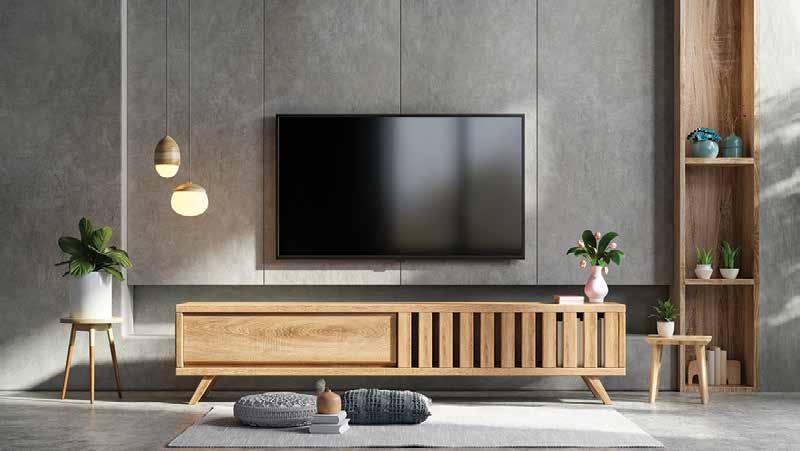
METRO - An “out with the old, in with the new” mentality can extend to people’s visions for their homes. A home in need of repair or renovation can serve as a catalyst to take inventory of personal style and help make interior spaces reflect one’s unique vibe.
A living room can grow stale over time and often serves as a catch-call for clothing, blankets, gadgets, and other items. Upon recognizing a living room has seen better days, individuals may decide it’s time to give the space a new vibe. That transformation can start with these strategies.
Clutter frequently is the culprit behind a living room that may not give off the vibe individuals desire. As families grow and people add belongings, space may be at a premium. Less is more has never been a more important concept. Remove extraneous items before purchasing new furniture or transitioning to a new
design. You may even want to remove everything and start from scratch before reintroducing desirable elements to the space.
Some people are adept at decorating and designing spaces. But just as you wouldn’t perform your own medical procedures, you should leave jobs like interior design and renovations to the professionals. Hiring a professional interior designer and contractors can really bring a living room together in ways homeowners may have never imagined. These pros can build off of your ideas and truly create a space that may be worthy of a magazine spread.
You may want to consider adding natural materials in the design to promote well-being. Eco-friendly furnishings, raw fibers and organic textures will create an environment from
sustainable choices. Plenty of plants also can create a welcoming environment that helps you surround yourself with positive energy and the items you love.
One of the easiest ways to transform a room’s vibe is to utilize lighting. Change draperies to allow more natural light to shine in. Consider additional windows or skylights if yours is a particularly dark home. If you desire to create a more vivid or cozy ambiance, use a combination of accent, task and supplemental lighting in

the space so there are no dim corners.
Create an industrial or urban vibe
Industrial-chic design celebrates the bones of a building. It’s what makes city lofts so appealing, with their exposed beams and brick. Even those who live in suburbia or out in the country can give a living room this look with subtle nods to the style. Unadorned windows, clean lines on furniture, oversized, gallery-style art, and metal accents can add touches of this popular look to your home.
Revamping a living room doesn’t have to be difficult.


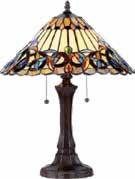
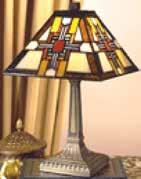


METRO - While home buyers typically take their time to examine each room and space inside and outside a home before making an offer, the real estate experts at Trulia note that two rooms in particular seem to merit the closest inspection among prospective buyers. Kitchens and the bathroom in an owner’s suite can dramatically increase the value of a home. Trulia recommends that homeowners consider their neighborhood and identify their target buyers prior to beginning a kitchen or owner’s suite renovation, as such variables can provide direction and inspiration when refurbish -

ing these widely valued areas in a home.
METRO - Bedrooms are more than places to lay our heads at the end of the day. Bedrooms serve different functions, and not all are conducive to relaxation.
People who use their bedrooms as a work space may find they’re compromising their well-being by introducing activities into the bedroom. The Sleep Foundation says having an office in the bedroom blurs the lines between work and personal life, which can have serious effects on sleep. Rather, people should be looking to turn their bedrooms into relaxing retreats that offer a respite from the outside world.
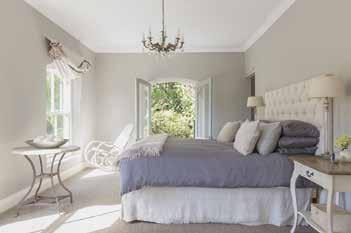
There is some evidence that the brain is more calm near an empty dresser, desk or clothes hamper. Therefore, removing excessive items from the room is a first step to making a nice retreat.
• Add soft lighting. Adjust the intensity and the color of the lighting in the bedroom. It should be subtle and warming. Dimmers enable homeowners to adjust lighting as needed.
• Use a neutral color palette. Neutral color palettes evoke a
• Remove blue-light emitting devices. Computers, tablets, smartphones, and other electronic devices emit blue light, which can compromise natural melatonin production in the body that contributes to sleep. Such devices should not be used at night in the bedroom.
spa feeling. Walls can be painted white, beige or a light shade of gray. This can help the room feel calming and welcoming.
• Declutter the room. A sense of calm can be achieved simply by removing excess clutter.
• Install an electric fireplace. There is something to be said for the relaxing effects of gazing into the flames of a fire. A crackling (faux-wood) fire is an added layer of indulgence in a bedroom.
• Add an area rug. Even in rooms with carpeting, an area rug under the bed can further define the perimeter of the
bed and add extra plushness underfoot.
• Invest in aromatherapy diffusers. Certain smells can create a relaxing mood. These may be sandalwood, lavender or jasmine. Utilizing their preferred scents, homeowners can employ reed diffusers in their bedrooms to enjoy the aromas of natural oils.
• Used closed storage. Open shelves and visible closet interiors may not hide a mess. Exposure to clutter can contribute to feelings of anxiety. Store items that shouldn’t be on display behind closed doors or drawers.
• Bring in luxury linens. Homeowners should not skimp on comforters, sheets, duvet covers, and pillows for their beds. A cozy bed to dive right into can serve as the centerpiece of a bedroom retreat.

METRO - When planning a landscape, it’s tempting to pick the most colorful, vibrant plants. An eye-popping property filled with yellows, purples, pinks, and other bold colors is sure to catch anyone’s eye. However, the right plant for a property is not always the most colorful.
Gardening novices can easily be overwhelmed on a trip to their local garden center, where employees may ask a host of questions that have little to do with homeowners’ preferences and everything to do with the growing conditions around their properties. Those questions may seem a little intense, but they’re well-intentioned. Successful gardening is more about soil conditions and access to sunlight than it is about the plants themselves. An awe-inspiring hydrangea bush will only impress if it’s planted in a location where it can thrive.
The Landscape, Nursery and Urban For-
estry program at UMass Amherst Extension advises homeowners to learn about the following site conditions, and ultimately share that knowledge with local garden center representatives, before they pick and plant anything around their properties.
• Hardiness zone: The Plant Hardiness Zone Map from the U.S. Department of Agriculture is designed to help gardeners determine which plants are most likely to thrive where they live. The map can be found on the USDA website at www.usda.gov.
• Light availability, intensity, and duration, from full sun to deep shade: Prior to planting, homeowners can document this information in a notebook or on their smartphones. Do so for a long enough period of time that you can get an accurate of idea of the conditions in which plants will have to grow, and then take that information with you



- Homeowners’ fasciation with a lush, green lawn is something that has developed over time and is still “growing” strong. According to a 2019 survey conducted on behalf of the National Association of Landscape Professionals, 81 percent of all Americans had lawns and 79 percent said a lawn is an important feature when buying or renting a property.
Even though lush lawns are still coveted, due to drought, the financial climate and even invading insect populations, many people are taking inventory of their landscapes and deciding if a lawn is a priority, even going so far as to reinvent their spaces with lawn alternatives. Still, there are ways to keep properties green no matter which route is taken. Here’s a look at some environmentally friendly ways to address a landscape.
There are many ways to water landscapes, but homeowners may want to take their cues from the commercial farming industry. Drip irrigation systems utilize a network of valves, pipes and tubing close to the roots of plants or under the soil. Such systems are more efficient than surface irrigation options, helping to save water and nutrients in the soil.
Scotts Lawn Care suggests watering a lawn in the morning before 10 a.m. when it is cooler and winds tend to be calmer. This ensures water can
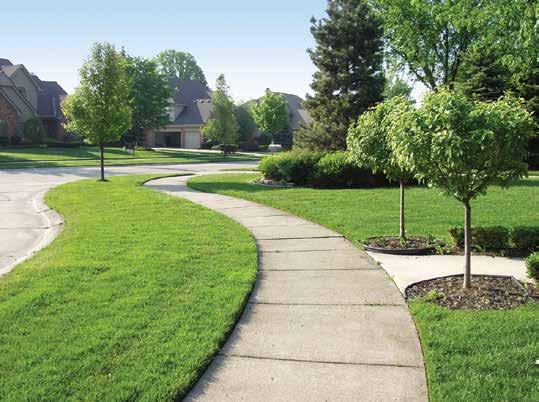
Green landscapes are possible with a few tips that help conserve water and maximize natural resources.
be absorbed into the soil and grass roots before evaporation occurs. Watering midday may cause the water droplets on the lawn blades to heat up and actually scorch the lawn.
Homeowners can experiment with eco-friendly grass seed blends that mix native grasses and may not require as much water nor ideal growing conditions.
Rather than focusing solely on grass, some homeowners are turning to alternatives like clover and even moss, particularly if their landscapes
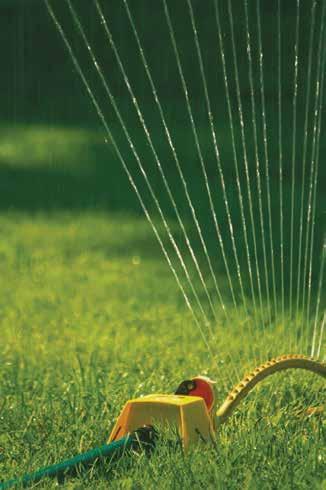
do not have the most pristine growing conditions. This may reduce the need for chemical fertilizers and herbicides. The result is still a green, inviting yard.
Mowing too frequently or at too low a height may compromise the lawn’s ability to thrive. Grass cut to the proper height develops a deep root system to better locate water and nutrients in the soil. That means homeowners may not have to water as much or as frequently. Taller lawns also shade the soil and the roots, reducing some evaporation.
Leave the clippings on the lawn to break down and further feed nutrients to the lawn, helping it look greener and thrive. Furthermore, rely on supplementation with compost to reinforce the nutrient profile in the soil. The National Resources Defense Council says composting is the natural process of recycling organic matter, such as leaves and food scraps, into a valuable fertilizer. It doesn’t take much to nurture compost in a yard.
METRO - Spring marks the return of flowering plants and warm weather. And homeowners know that spring also ushers in the return of home renovation season.
Homeowners undoubtedly have an extensive list of projects on their to-do list this spring, and that may include helping their lawns and gardens recover after a long winter. Unpredictable weather, which can include drought and excessive rainfall and everything in between, can take its toll on a lawn. In certain instances, the best solution may be planting new grass. But homeowners can consider these tips before they begin the process of reseeding or replanting their lawns.
• Scarify the lawn. Scarifying a lawn can help to create a clean slate, but the timing must be right. Various lawn and garden experts, including those at BBC Gardeners’ World Magazine, recommend scarifying in spring or early autumn. But don’t jump the gun when scarifying in spring by scarifying before the lawn has started to grow after a dormant winter. Scarify when the soil is a little wet and the grass is once again actively growing. Scarfiying can remove any lingering weeds from last season and also pull up any moss that might have taken hold over the winter. Without weeds and moss to contend with, freshly planted seeds are in better position to thrive.
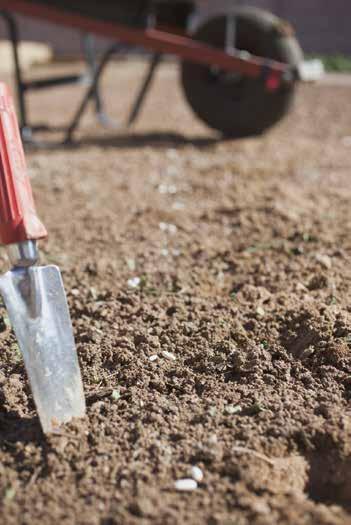
Metro Photo
Spring is a great time for homeowners in various regions to reseed or replant their lawns. With the right approach, homeowners can enjoy a full and lush lawn throughout summer.
• Work with a landscaping professional. Homeowners with manageable lawns can likely scarify their own lawns with a relatively inexpensive plug-in scarifier. However, scarifying can be a strenuous physical activity, particularly for homeowners with large lawns. In such instances, homeowners can benefit from working with a qualified landscaping
professional. Such a professional can scarify the lawn and subsequently reseed or replant new grass. The latter task is not so simple, as the lawn care experts at Scotts® note that choosing the correct seed is a vital part of reseeding or replanting a lawn. Choosing seed may sound simple, but it’s a potentially complex decision that requires knowledge of the
existing grass, including when to plant it. Certain grasses are best planted in spring or early fall, while others are best planted in summer. A qualified landscaping professional can identify the existing grass and plan the seeding or planting around this important detail.
• Prepare to water the lawn. Watering is vital to the long-term success and health of freshly planted grass seed.
Scotts® urges homeowners to keep the top inch of soil consistently moist, but not soggy. That requires a daily commitment, and setting a multi-function hose nozzle or sprinkler to the mist setting once per day or more if it’s hot outside can increase the chances grass will grow in thick and strong. Scotts® recommends keeping the top two inches of the soil moist until the new grass reaches a mowing height of roughly three inches. Once that benchmark has been reached, watering frequency can be cut back to about twice per week, but now the soil should be deeply soaked instead of misted. The soaking will help roots grow deep into the soil.
Millions of people embrace opportunities to get back in their gardens each spring, and they might be reaping more rewards from that activity than they realize. According to the American Institute of Stress, gardening sparks a level of creativity among enthusiasts, and that can help to alleviate stress by lowering levels of the hormone cortisol. In addition, authors of a 2022 study published in the journal Urban Forestry & Urban Greening concluded that gardening during the COVID-19 pandemic helped people cope with coronavirus-related stress through outdoor activity.
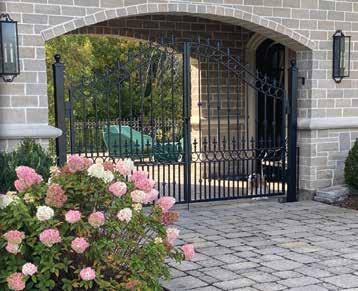


For cooling effect during the summer your fan should run in the forward direction (counter-clockwise). This will force the room air down on you giving you the wind chill effect that makes you feel cooler.
During the winter your fan should run in reverse (clockwise) at a low speed. This will gently draw up the room air up towards the ceiling and force the warm air down and out towards the walls avoiding giving you the wind chill efftect.





METRO - Plants can be beautiful additions to a home and provide a natural way to filter interior air. Many homeowners prefer to enhance their spaces with greenery and various flowers. Though that’s a great way to design a home’s interior, pet owners must exercise caution with plants to safeguard their furry friends.
Adults understand that they may need to wash their hands after handling certain types of plants, and that it can be unsafe to consume them. Children are instructed by their parents to do the same. Even though many pets can be trained to steer clear of certain dangers, their natural propensity to gnaw on various items out of curiosity or even boredom may entice them to investigate plants.
Some plants are more dangerous than others. According to the Farmer’s Almanac, more than 700 indoor/outdoor plants contain toxic substances that are not safe for cats and dogs. Learning about common plants and their hazards can help keep pets safe. The following are some plants that are toxic to cats and dogs, courtesy of the ASPCA.
• Adam and Eve (Arum, Starch Root): This plant can cause oral irritation, pain and swelling of the mouth, tongue and lips, excessive drooling, and difficulty swallowing.
• Aloe vera: While the gel is considered edible, the rest of the plant may cause lethargy, diarrhea and vomiting.
• Amaryllis: There are
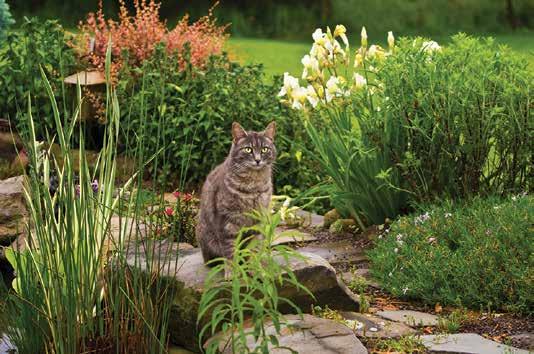
many different types of amaryllis, and most will cause vomiting, depression, diarrhea, abdominal pain, hypersalivation, and tremors in cats and dogs.
• Azalea: These plants of the rhododendron family cause vomiting, diarrhea, weakness, and potential cardiac failure.
• Begonia: The most toxic part of this plant is underground. Still, it may cause vomiting and salivation in dogs and cats.
• California ivy: The foliage is more toxic than the berries, and could contribute to vomiting, abdominal pain, hypersalivation, and diarrhea.
• Clematis: Salivation, vomiting and diarrhea are common if the plant is ingested.
• Daisy (and other chrysanthemum species): Dermatitis,
vomiting, diarrhea, hypersalivation, and incoordination may occur.
• Elephant ears: This plant may cause oral irritation, pain and swelling of the mouth, tongue and lips, excessive drooling, and difficulty swallowing.
• Foxglove: This may cause cardiac arrythmia, vomiting, diarrhea, weakness, cardiac failure, and death.
• Geranium: Ingesting geranium may lead to depression, dermatitis and vomiting.
• Holly: Vomiting, diarrhea and depression may occur. However, leaves and berries are low toxicity.
• Mother of millions: This succulent could cause vomiting, diarrhea, and, in rare instances, abnormal heart rhythm.
• Philodendron: Oral irritation, pain and swelling of the mouth, tongue and lips, excessive drooling, vomiting, and difficulty swallowing could occur.
• Sago palm: The Sago palm can cause vomiting, increased thirst, hemorrhagic gastroenteritis, bruising, coagulopathy, liver damage, liver failure, and death.
• Snake plant: Nausea, vomiting and diarrhea could occur if pets ingest this plant.
For a complete list of plants that can be toxic to cats, dogs and horses, visit www.aspca.org. Those who suspect their pets may have ingested a potentially toxic substance should call their local veterinarians as soon as possible or the ASPCA at (888) 426-4435.
